Everything you need to know about Plavac Mali from Vis Island
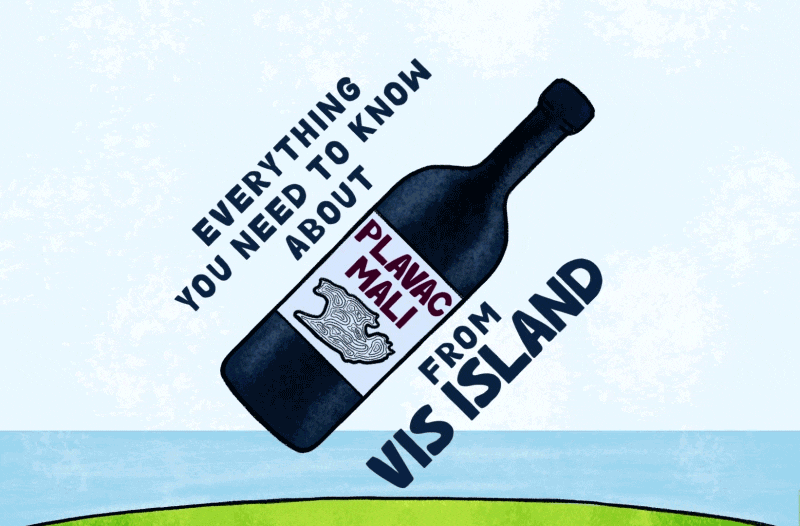
Plavac Mali is a red wine grape variety native to Croatia, particularly associated with the Dalmatian coast and the islands of the Adriatic Sea. “Plavac Mali” translates to “little blue” in Croatian, referring to the small, dark blue grapes the vine produces.
Plavac Mali is the most planted variety in Dalmatia and the most planted red variety in Croatia, but this is not the only reason why it’s often called the “King of Croatian Reds.”
In this article, we will introduce you to the general characteristics of Plavac Mali wines. We will also explore the similarities and differences between Plavac Mali wines. The variations in style, from lighter and fruitier to more full-bodied and tannic, depend on the winemaking techniques but also on the specific terroir where the grapes are grown.
What are the characteristics of Plavac Mali?
Plavac Mali is known for producing rich-bodied, flavorful wines high in alcohol and grape tannins.
Plavac Mali wines are usually dry, although they can be semi-dry or sweet. A more traditional expression of Plavac Mali can have a little residual sugar but is still under the dry category.
Plavac Mali is known for producing wines with distinct characteristics. Here are some of the key features associated with this grape variety:
- Colour: Plavac Mali wines typically have a deep red to garnet colour, reflecting the dark pigments in the grape skins. In the glass, most Plavac Mali wines are not transparent. This is probably one of the reasons why red wines are called “black” in Croatia and South Slavic languages.
- Aroma: The wines often exhibit a complex aromatic profile. This means the fine Plavac Mali wines change and develop in a wine glass. You can find notes of dark fruits such as carob, dark cherries, and sometimes even dried fruits (figs, plums). Additionally, there might be hints of Mediterranean herbs, like sage or thyme. Spicy and peppery notes are also quite common.
- Body: High-quality Plavac Mali wines are generally full-bodied. They can be big wines, even massive, sometimes needing more balance. Still, Plavac Mali performs best as full or fuller-bodied wine. There are examples of high-quality Plavac Mali wines, which are lighter-bodied. However, those are mostly curious exceptions from the general rule.
- Tannins: Plavac Mali wines can be robust and almost always have a noticeable tannic structure. The tannins in Plavac Mali wines provide structure and can be pretty firm. This characteristic can contribute to the ageing ability of these wines, as they may mellow and become more integrated with time. Ageing in wooden barrels typically softens Plavac Mali tannins. But, there are also quality examples of Plavac Mali wines made in Inox tanks.
- Alcohol Content: Growing in the carst, rocky soils of sunburnt Dalmatia, Plavac Mali grapes usually accumulate lots of sugars. As a result, Plavac Mali wines often have moderate (13,5%) to high alcohol content (16%), adding to their richness and warmth. The ability to achieve a higher alcohol content and remain in balance is one of the most essential features of high-quality Plavac Mali wines.
- Terroir Influence: The individual characteristics of Plavac Mali wines can vary greatly depending on the specific terroir site where the grapes are grown. Wines from different subregions and microclimates may display unique nuances and expressions. The most famous appellation of Plavac Mali is Dingač and Postup on the Pelješac peninsula. The youngest appellation of exceptional Plavac Mali is Komarna, across the Pelješac peninsula. Some of the best sites are on the islands: Hvar, Brač, and Vis.
- Ageing Potential: High-quality Plavac Mali wines have proven their ability to improve and deepen with age in the bottle. The finest examples showcase Plavac Mali wines developed beautifully after 20 years in bottles and more. Plavac Mali wines can age well, the flavours can evolve, and the wine can become more harmonious.
Overall, Plavac Mali is appreciated for producing bold and distinctive wines that showcase the character of the Dalmatian coast and the specific vineyard sites where the grapes are cultivated.
Plavac Mali is notorious among winegrowers for its uneven ripening properties unless grown in superior terroir. It is common for Plavac Mali to have both green berries and raisins on the same grape cluster. If left to ripen fully, the tannins and sugars will be very high, but the acid level will decrease.
What does Plavac Mali taste like?
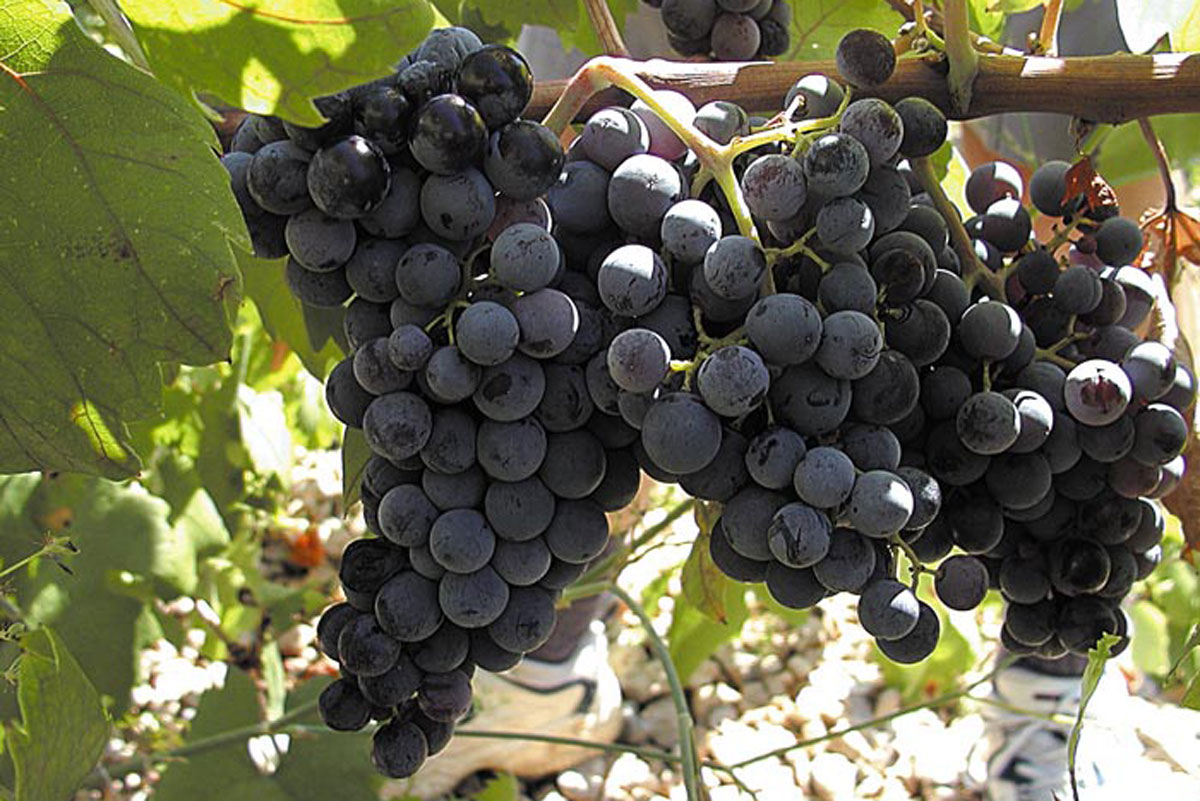
Plavac Mali wines have a distinctive and robust flavour profile. A combination of the following often characterises the taste of Plavac Mali wines:
- Dark Fruits: Plavac wines typically feature rich flavours of dark fruits, such as blackberries and plums. They sometimes express dried fruits, especially dried figs or cherries.
- Spices and herbs: Plavac Mali wines often have spicy elements, including hints of black pepper and Mediterranean spices like thyme or sage. Many Plavac wines exhibit herbal characteristics, reflecting the influence of the Mediterranean climate on the grapevines.
- Minerality: Depending on the specific terroir where the grapes are grown, Plavac Mali wines may exhibit mineral notes. The influence of the coastal environment and the rocky soils of some vineyards can contribute to a sense of minerality in the wine. This aspect is generally more stony than earthy.
- Pronounced tannins: Plavac Mali wines are known for their firm tannins, which contribute to the wine’s structure. In inferior vintages or lesser positions, Plavac might even have green tannins. In many circumstances, tannins will be leathery. In well-balanced Plavac wines, tannins are an essential part of varietal character.
- Full Body: Plavac Mali wines are generally full-bodied, meaning they have a weighty and substantial feel on the palate. This contributes to the wine’s overall richness and intensity.
- Alcohol Warmth: Plavac Mali wines often have a moderate to high alcohol content, which can add a warming sensation, especially in the finish. Alcohol levels present the greatest challenge of achieving balance in Plavac wines today.
- Lower acidity: This is part of the overall grape profile of Plavac Mali. Lower acidity can sometimes make a wine’s fruit flavours appear more prominent, creating a perception of sweetness, even if the wine is technically dry.
What are the flavours of Plavac Mali?
Plavac Mali is a versatile grape that can produce wines ranging from more fruit-forward and approachable styles to those with greater complexity and ageing potential.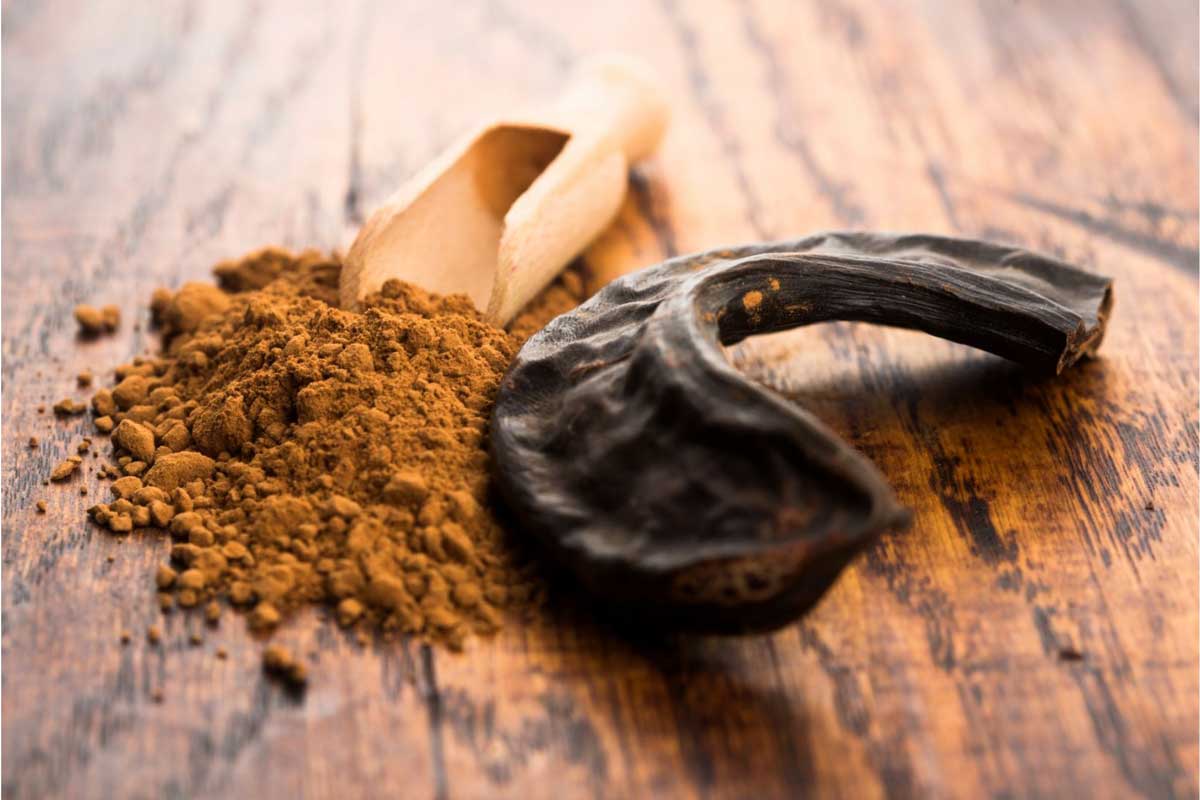
Typical Plavac Mali flavours and aromas include:
- carob,
- sage, thyme,
- dried figs, dried cherries,
- dark cherries, blueberries and plums,
- pepper, and spices, leathery aromas,
- stony minerality
Exploring wines from different producers and regions can provide a more comprehensive understanding of the diverse expressions of Plavac Mali.
What is Plavac Mali similar to?
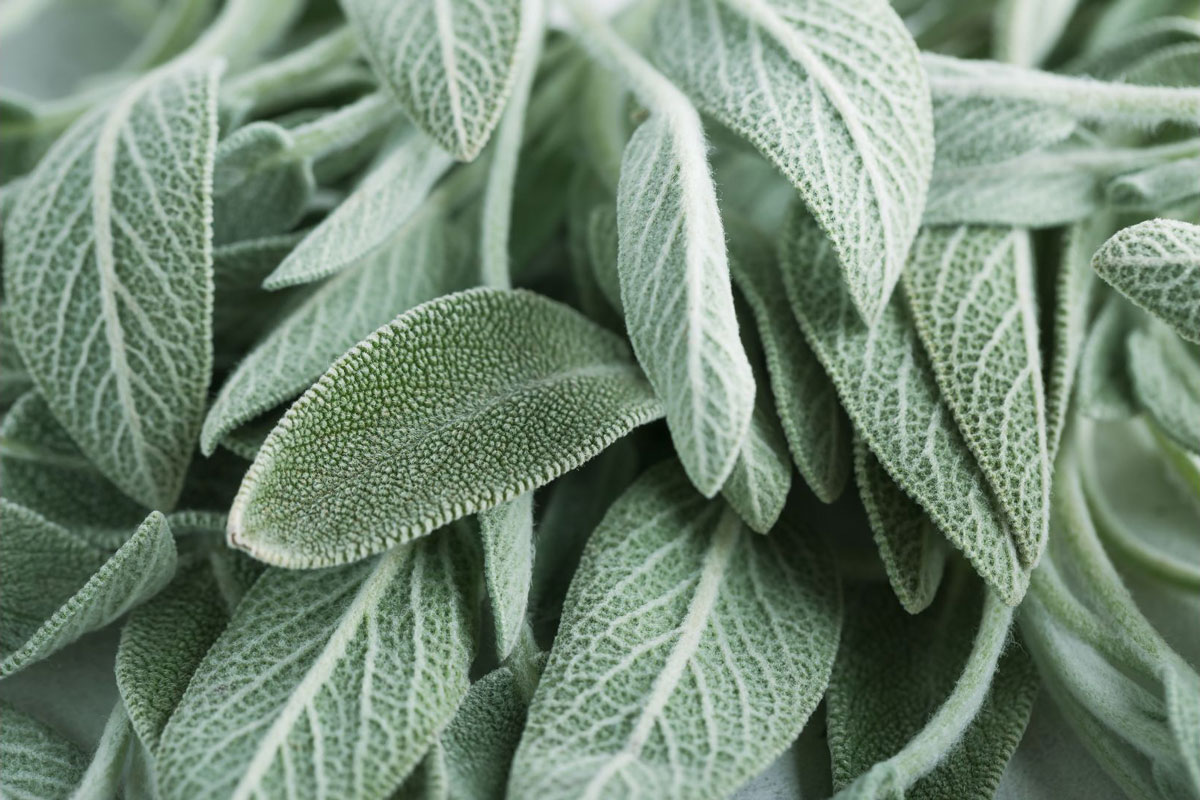
While Plavac Mali may share certain flavour profiles with many varieties, it also has its own unique characteristics. These characteristics separate the Plavac grape more than associate it with other varieties.
Plavac clearly belongs to a pool of Mediterranean red varieties influenced by the specific terroir of the Dalmatian coast and the Adriatic.
Yet, it makes little sense to compare Plavac to Zinfandel because Zinfandel (Primitivo, Tribidrag, Crljenak). Zinfandel wine is usually much more fruit-forward and with higher acids and freshness. Even the tannin structure would be quite different. Zins tannins are generally softer and easier to shape.
If necessary, it would be better to compare Plavac Mali to the Portuguese variety Touriga Nacional or Greece wines from the Agiorgitiko grape.
These comparisons may offer a more meaningful understanding of Plavac Mali’s unique characteristics within the broader context of Mediterranean red varieties.
Touriga Nacional, known for its deep colour, concentrated and complex dark fruit aromas, and firm tannins, shares more structural and aromatic similarities with Plavac Mali.
Likewise, The small berries and thick skins of the grape contribute to high phenolic levels of Agiorgitiko. Agiorgitiko also tends to be low in acidity and high in alcohol. Along with its rich, dark fruit flavours, it matches Plavac Mali’s profile more closely than Zinfandel.
Why is Plavac Mali from Vis Island different?
Croatian wines from Plavac Mali grape include the reds from:
- Dingač and Postup vineyards on the Pelješac peninsula,
- Hvar Island, especially Ivan Dolac vineyards
- Brač Island, especially Murvica and Stipančić vineyards
- Vis Island,
- Komarna vineyards,
- and other distinctive appellations (Konavle, Korčula island, etc.)
One of the exceptional features of Plavac Mali, when cultivated on Vis Island, is its remarkable ability to carry higher alcohol content without compromising balance. The ability to achieve balance even at extremely high alcohol levels is what separates the Vis Island Plavac Mali.
For example, a 16,5% red wine can suffer from imbalanced taste and structure. Such wine will be noticeably alcoholic and usually overripe. However, Plavac Mali from Vis Island was historically proven to achieve balance even at the highest alcohol levels.
Several factors contribute to this phenomenon beyond the customary considerations of farming and growing practices. The soil type on Vis Island plays a crucial role in influencing ripening conditions.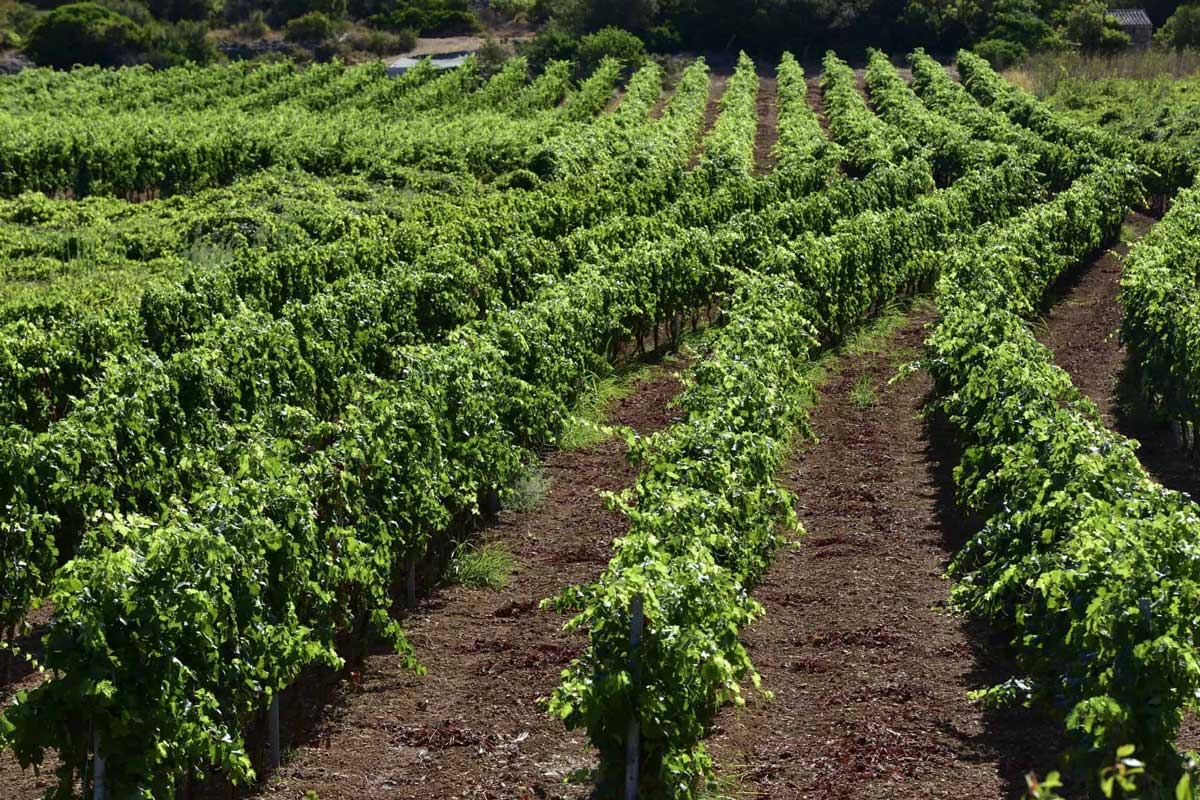
The vineyard soil on Vis Island is notably more sandy than other regions where premium Plavac Mali is cultivated. Many vineyards on the island exhibit sand sediment in the topsoil and throughout the soil composition. This sandy soil composition likely contributes to the ability of the Plavac Mali vines on Vis Island to achieve optimal ripening conditions, resulting in wines that maintain a harmonious balance, even at elevated alcohol levels.
So, when you see 15% alc or more on a bottle of Plavac, do not automatically think the wine will feel over-alcoholic. If it comes from Vis island, there is a great chance it can handle ever higher alcohol with ease. You might not even notice the alcoholic strength in the best examples.
Of course, there are other factors contributing to said characteristics.
Vislander Plavac Mali Comparison
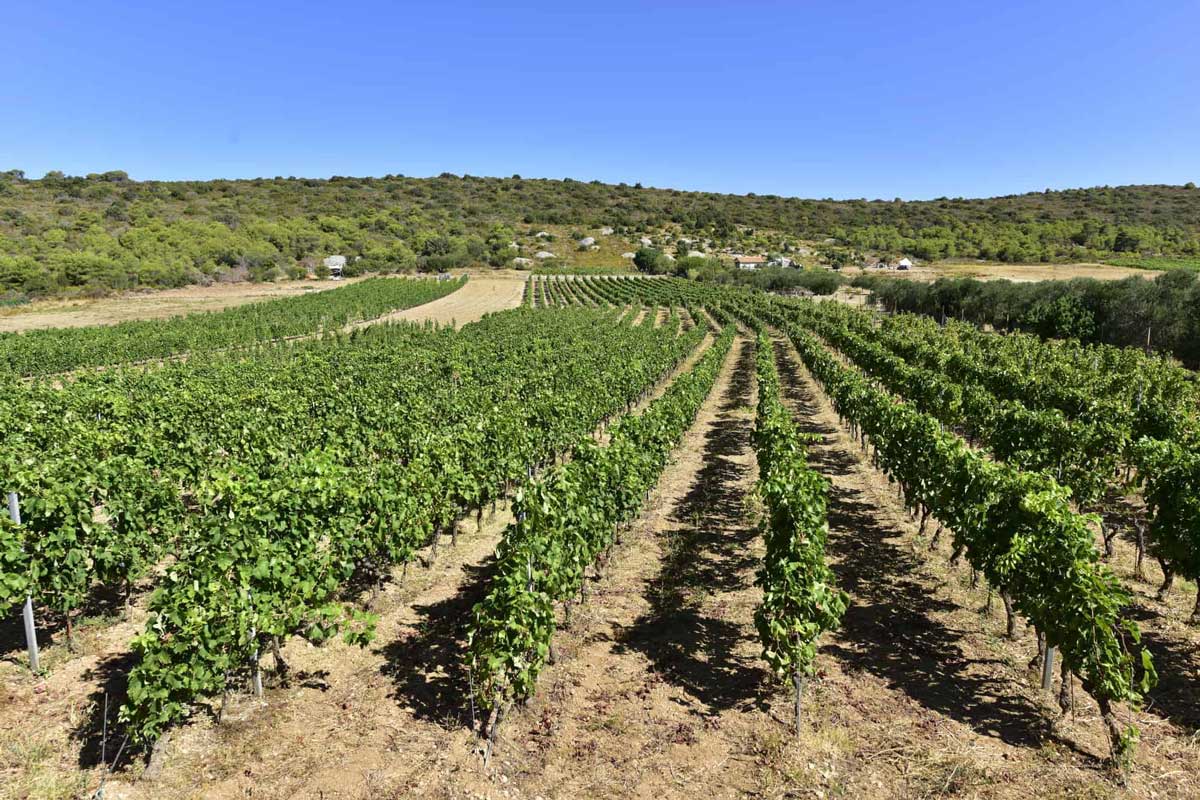
For instance, Plavac Mali from Voščice originates from grapes cultivated in a vineyard aged over 15 years, while Plavac from Ljubišće comes from a vineyard that is 85% older than 15 years. This age difference in vineyards contributes to variations in grape maturity, vine balance, and overall flavour development.
In contrast, Vislander Plavac from Milna and Tihobraće fields comes from expanded and replanted vineyards, which are, on average, younger. Despite their relative youth, the yields from Milna and Tihobraće are lower compared to Voščice and Ljubišće Plavac wines. This lower yield can intensify the grapes’ flavour concentration, resulting in wines with a more pronounced character.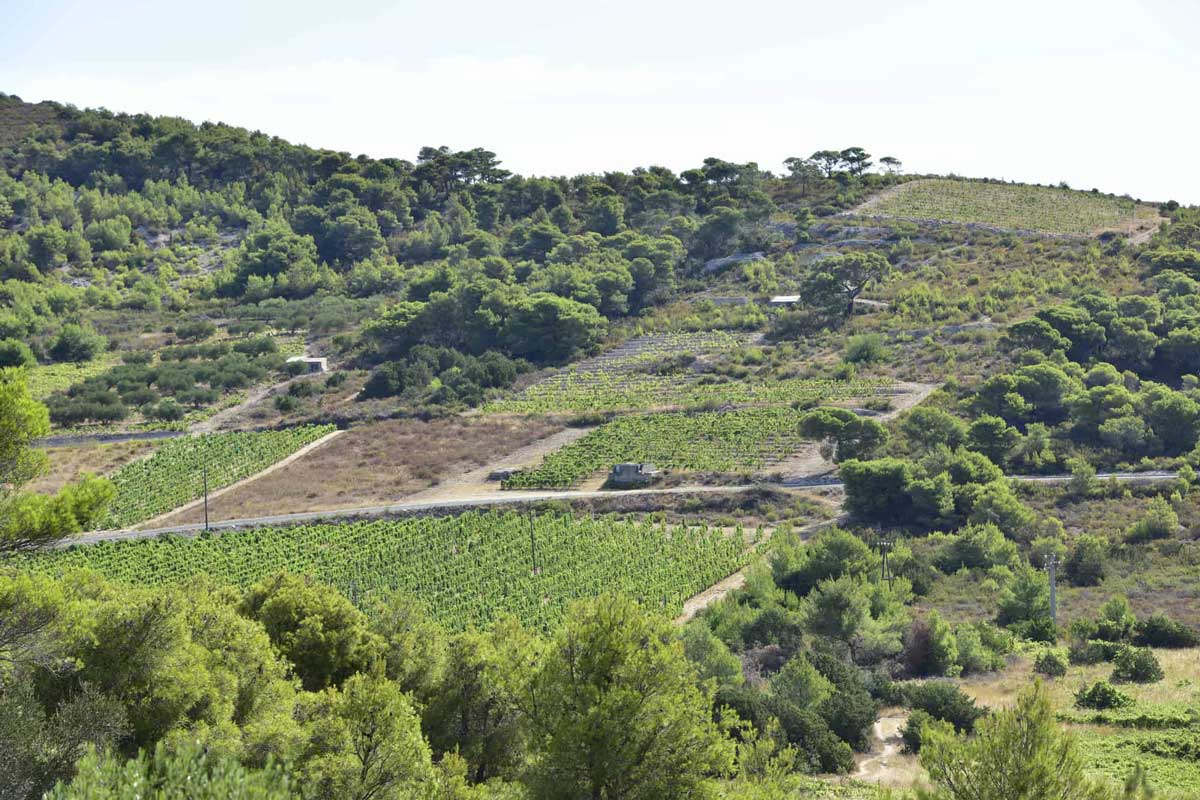
Beyond the age of the vines, soil composition and winemaking practices further differentiate these Plavac Mali expressions. Plavac wines from Ljubišće and Voščice are generally more approachable when young. They serve as excellent “starter” wines with a fruit-forward profile and lower alcohol content, making them accessible to a broader range of wine enthusiasts.
On the other hand, Plavac Mali wines from Milna and Tihobraće exhibit a different personality. They are more concentrated, higher in tannin, and boast a much darker flavour profile. The increased tannin structure adds depth and complexity to these wines, making them suitable for those who appreciate a more robust and age-worthy red wine.
This comparison underscores the impact of vineyard age, yield, soil composition, and winemaking choices on the final expression of Vislander Plavac Mali. Each vineyard imparts its unique character to the wine, providing a diverse array of options for enthusiasts seeking distinct experiences within the rich tapestry of Plavac Mali wines from Vis Island.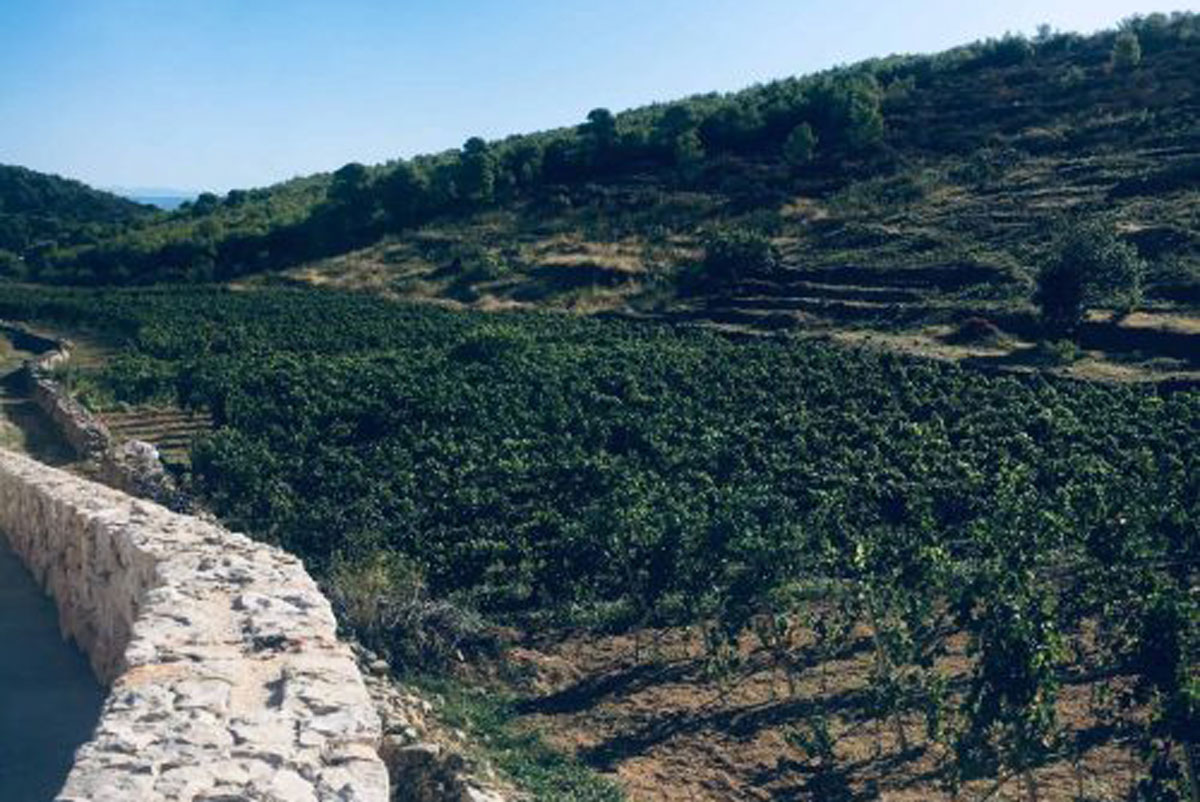
Conclusion
In summary, exploring Plavac Mali from Vis Island reveals diverse characteristics that distinguish these wines within Croatian viticulture. As the most planted red variety in Croatia, Plavac Mali often hailed as the “King of Croatian Reds,” demonstrates versatility across various styles, from lighter and fruitier to full-bodied and tannic.
The Plavac wines generally exhibit deep red to garnet colours, complex aromas of dark fruits, Mediterranean herbs, and pronounced tannins. Vis Island is a unique terroir, contributing to Plavac Mali’s ability to maintain balance at high alcohol levels due to its sandy soil and other distinctions.
Comparing Plavac Mali wines from different Vis Island vineyards emphasises the impact of vineyard age, architecture, soil, and winemaking on the final product. From older vineyards yielding approachable wines (in an example of Vislander Voščice and Ljubišće) to younger, concentrated expressions (in an example of Vislander Milna and Tihobraće), each imparts a distinct personality to the Plavac Mali.
In essence, the journey into Vis Island’s Plavac Mali is a captivating exploration of a grape deeply embedded in Croatian winemaking, offering wine enthusiasts diverse and authentic expressions from the Adriatic.



















